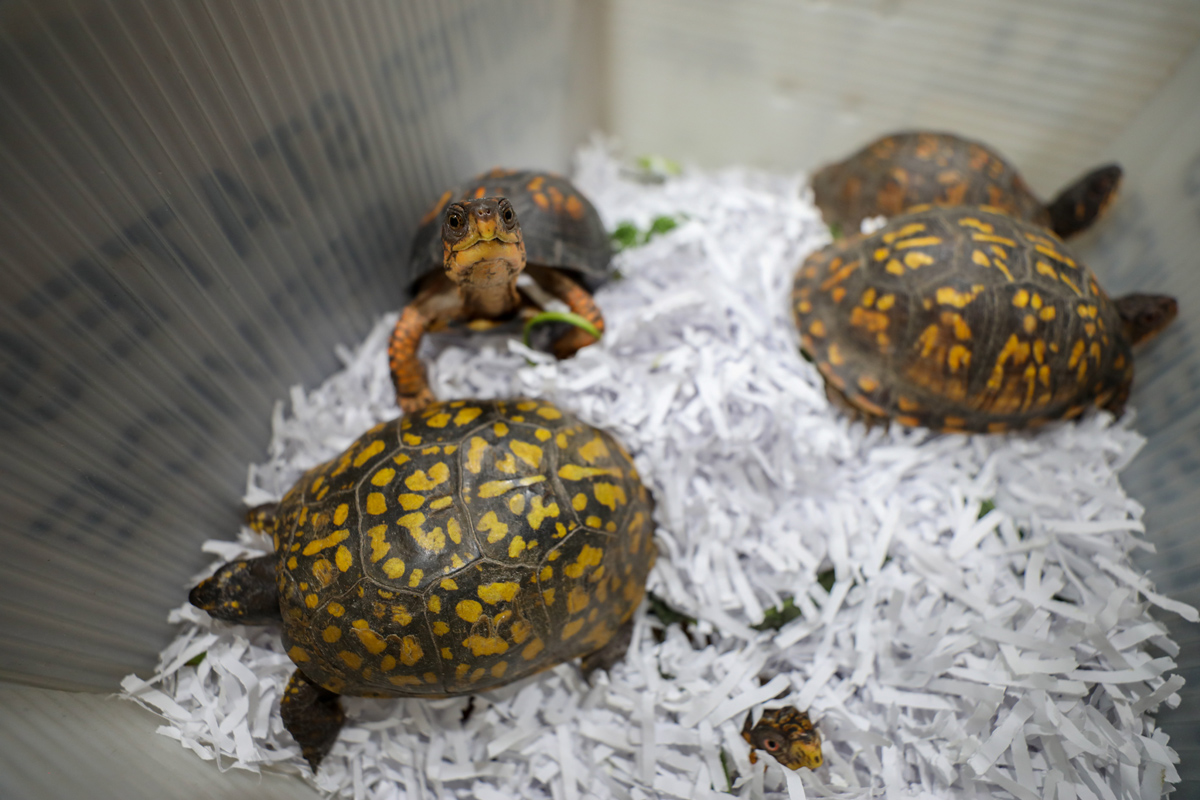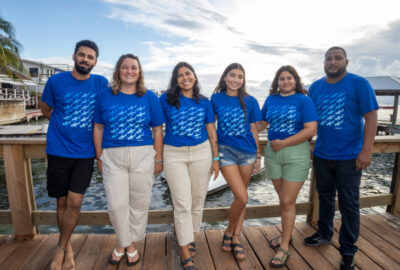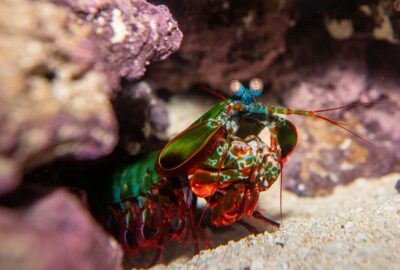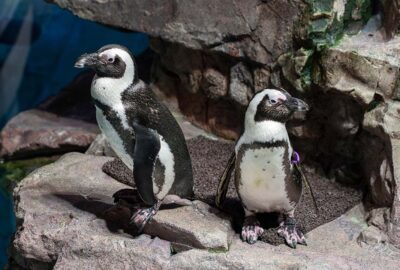Partnering to Save Eastern Box Turtles
Aquarium and zoo teams work to save nearly 100 eastern box turtles being illegally smuggled out of the U.S.
By New England Aquarium on Tuesday, November 02, 2021


Deadly ranavirus outbreak among turtles confiscated by U.S. Fish and Wildlife Service highlights risks and cruelty of illegal wildlife trade
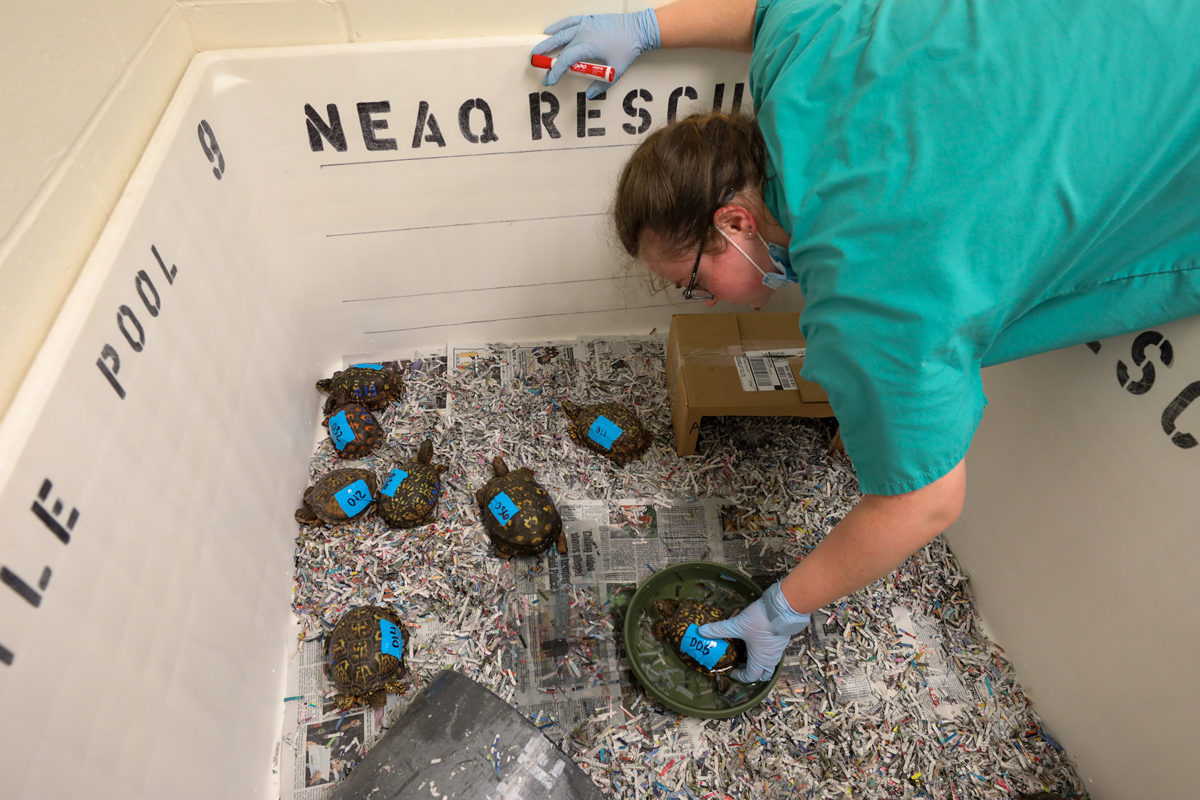 When nearly 100 eastern box turtles, being illegally smuggled out of the U.S., were confiscated this summer by U.S. Fish and Wildlife Service at a U.S. port while en route to Asia, the New England Aquarium was called in to help. The Aquarium took in many of the turtles and enlisted Zoo New England and Roger Williams Park Zoo to assist with treating the animals that were in poor condition, suffering from dehydration and eye infections.
When nearly 100 eastern box turtles, being illegally smuggled out of the U.S., were confiscated this summer by U.S. Fish and Wildlife Service at a U.S. port while en route to Asia, the New England Aquarium was called in to help. The Aquarium took in many of the turtles and enlisted Zoo New England and Roger Williams Park Zoo to assist with treating the animals that were in poor condition, suffering from dehydration and eye infections.
Federal wildlife officials discovered that the smugglers put multiple turtles, taken illegally from the wild, together into one box without food or water. Found hidden inside falsely labeled boxes, each turtle had been stuffed inside a tight sock to prevent it from moving, muffling the telltale sound of claws on cardboard that would signal something inside was alive. Many had ear and eye infections, likely caused by days of confinement without hydration or sunlight. They were all severely dehydrated, intentionally.
“When smugglers ship turtles, they often withhold food and water in advance because they don’t want them defecating,” explained the Service’s supervisory wildlife inspector for the Northeast region, Laura DiPrizio. “The smell draws attention.”
After assessing the turtles for injuries, separating the males from the females, and putting them in large tubs of water to begin to rehydrate, wildlife inspectors called on the Association of Zoos and Aquarium’s (AZA) Saving Animals From Extinction (SAFE) American Turtles Program, which assists facilities and agencies to ensure confiscated turtles are housed and cared for. As a result, the turtles went to the New England Aquarium, Roger Williams Park Zoo, and Zoo New England, where they were quarantined away from other animals.
Outbreak
In the following weeks, many of the turtles began to show symptoms of the deadly ranavirus, which affects reptiles, amphibians, and fish, and illustrates the risks and cruelty of the illegal wildlife trade. The virus causes animals to hemorrhage, gasp for air, and accumulate fluid under the skin. Transmission occurs through water, and it only takes one infected turtle to cause an outbreak. Since there is no known treatment, this meant the Aquarium could not support releasing the turtles back into the wild, donating them to another zoo or aquarium, or giving them up for adoption.
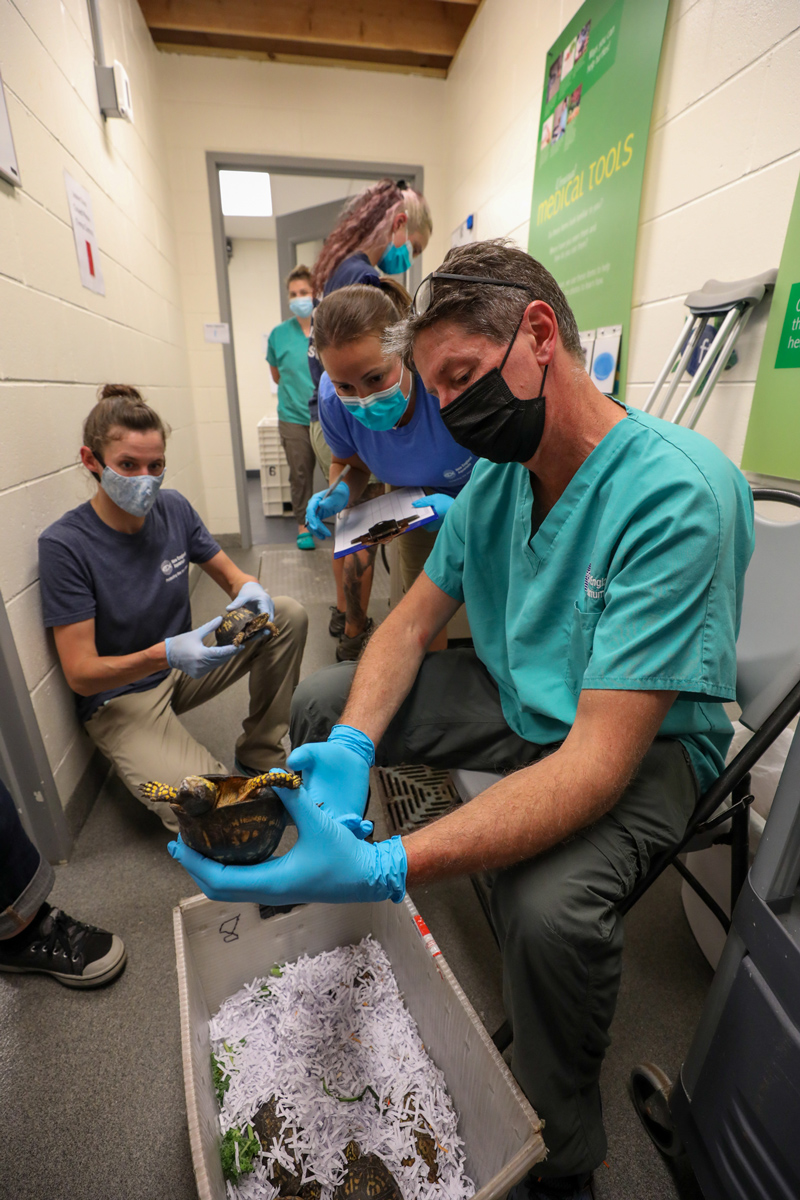 While considering the turtles’ grim future, the New England Aquarium’s Animal Health team aggressively pursued placing the turtles in a biosecure research facility. We soon learned that a laboratory at the University of Illinois could take the turtles to further study ranavirus. With support from the U.S. Fish and Wildlife Service and the AZA, the turtles left the Aquarium and zoos in September for treatment in Illinois where veterinarians are investigating disease characteristics and potential long-term options to reduce its impact.
While considering the turtles’ grim future, the New England Aquarium’s Animal Health team aggressively pursued placing the turtles in a biosecure research facility. We soon learned that a laboratory at the University of Illinois could take the turtles to further study ranavirus. With support from the U.S. Fish and Wildlife Service and the AZA, the turtles left the Aquarium and zoos in September for treatment in Illinois where veterinarians are investigating disease characteristics and potential long-term options to reduce its impact.
“Wildlife trafficking is a massive problem that presents a huge conservation risk for many species, especially turtles,” said the Aquarium’s Director of Animal Health Dr. Charles Innis who is also a veterinary advisor for the AZA’s SAFEAmerican Turtles Program. “When wild animals are amassed in groups by poachers, the likelihood of disease transmission is very high. Then, the animals may transmit the disease as they are transported around the world. While this situation is incredibly sad and infuriating, we are inspired by the extensive collaboration that is emerging to confront this problem.”
“The AZA SAFE American Turtle Program worked the way it was supposed to by finding emergency housing for turtles and providing critical veterinary care that informed our decision to conduct comprehensive disease screening to identify risks of release,” said Dave Collins, who runs the program.
“But the ranavirus outbreak illustrates the complexity of the challenge, and the ongoing need for resources and research to respond to the native turtle-trafficking crisis,” he said. “It’s a problem too big for one organization to solve.”
Trafficking of turtles causes big problems
The trafficking of U.S. native turtles persists. Previous confiscations and seizures resulting from search warrants have recovered hundreds, or sometimes thousands, of turtles at a time, including species that are listed as federally or state endangered. “This was a big shipment, but it’s not unusual to see many turtles at a time,” said DiPrizio. “It just represents one day.”
Turtles have long been targets of the wildlife trade, whether for food, medicine, or increasingly as status symbols, valued by wealthy collectors for their novelty and beauty. The internet fuels unsustainable demand in an unsustainable industry, despite regulations that have been put in place to protect these animals. As a protected species, it is illegal to collect or possess wild eastern box turtles, as well as many other native turtle species, without a permit (if at all) in most states where it naturally occurs.
Turtles are more vulnerable to illegal collection than most other wildlife. It takes many species a decade or more to reach reproductive age. But most turtles don’t survive that long — they fall victim to natural predators, like birds and fish, when they are tiny, bite-sized hatchlings. Those that do make it must reproduce for their entire lives to ensure just one hatchling also survives to adulthood to replace them in the population. When someone takes an individual turtle out of the wild, especially an adult, they could also be taking that turtle’s future replacement. When someone takes dozens of adult turtles, they put entire populations at risk.
Here are some tips to help stop illegal trade in turtles:
Report suspicious behavior. If you suspect someone is illegally collecting or selling wild turtles, contact the U.S. Fish and Wildlife Service by phone (1–844-FWS-TIPS) or contact your state wildlife agency. The Service is authorized to pay rewards for information or assistance that leads to an arrest, a criminal conviction, civil penalty assessment, or forfeiture of seized property. Do not confront suspicious persons or try to stop a crime yourself. Prioritize your safety.
Don’t share locations of wild turtles, especially online. It can be exciting to see turtles in the wild, and to share your discovery. But if you post a photo of a turtle on social media, don’t include information on where you found it. Turtle poachers mine the internet for this information and use it to target sites. If you want help identifying a turtle you saw in the wild, reach out to a local nature center or your state wildlife agency.
Before you buy, do your homework. Consider choosing a different type of animal to keep as a pet. Pet turtles require specialized care for decades, so be sure you are ready for the commitment. If you are, don’t shop, adopt. Check local shelters for unwanted turtles. If you buy, be a cautious consumer. Ask for certification that the turtle was captive bred.
